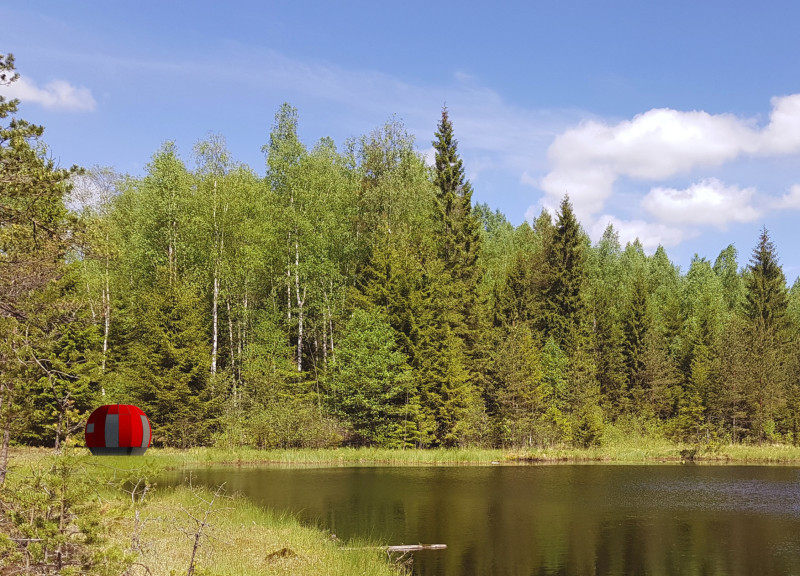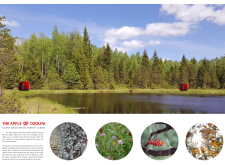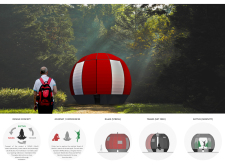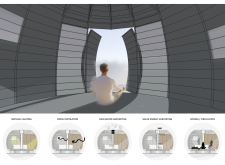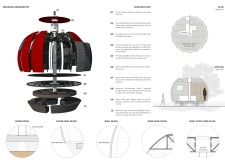5 key facts about this project
The Silent Meditation Forest Cabins are situated in Ozolini, surrounded by dense forests that contribute to a peaceful atmosphere. The design focuses on creating a space for reflection and introspection, catering to city dwellers looking for a retreat. The concept is inspired by GUNAS, which relate to personality and psychological traits. This foundation shapes the environment, encouraging users to engage in meditation and self-discovery.
Design Concept
Cabins are spread throughout the forest, resembling apples that have fallen from trees. This arrangement emphasizes a connection to nature and enhances the experience for visitors. Each cabin serves a specific purpose, offering distinct themes that guide individuals through their meditation journey. The overall focus is on stress relief and achieving a sense of calm, allowing users to explore different emotional states.
Spatial Organization
The layout of the cabins balances private and communal meditation experiences. Each cabin is designed around a particular theme; the red cabin symbolizes RAJAS, representing stress, while the grey interior embodies TAMAS, which signifies release. Additionally, the cabins offer views that encapsulate SATTVA, representing serenity. This thoughtful organization supports meditative practices, encouraging visitors to immerse themselves in their surroundings.
Sustainable Features
Sustainability is a critical element of the design. Natural lighting and cross ventilation are incorporated to increase energy efficiency and comfort for occupants. Rainwater harvesting and solar energy systems are part of the design, aiming for a self-sustaining operation while reducing environmental impact. These features align with the intent to coexist with the surrounding ecosystem, enhancing the overall experience for users.
Material Choices
Materials used in the construction reflect a focus on practicality and sustainability. Aluminium is selected for the rainwater harvesting tank, providing durability. Timber is used for roofs and walls, offering a warm aesthetic and connecting the cabins to the forest. Mild steel is featured in the structural elements, ensuring stability. Wool insulation is added to improve thermal performance, making the spaces energy-efficient.
The cabins emerge as more than just structures; they serve as spaces for personal reflection set amidst the forest. The careful design prioritizes harmony with nature, inviting users to fully engage with their meditative experience. Each element is crafted to enhance the connection between the occupants and their surroundings.


